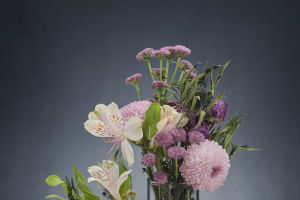Thrush birds are members of Turdidae which have worldwide distribution. These birds are closely related to flycatchers (Muscicapidae) and Old-World Warblers (Sylviidae). True thrush birds include Fieldfare, Blackbird, Ouzel, American Robin, Redwing of Europe, Nightingale thrush bird and Ground thrush. The birds that have close resemblance with thrush birds include Babbling thrush bird, Antthrush bird, Chinese thrush bird, Jay thrush bird, Jewelthrush bird and Wrenthrush bird.
They are more common in the Old World such as in Africa. Their nesting sites include cavities where they form cup shaped nests. These birds are small to medium sized birds. They are ground living birds. They feed on insects, certain invertebrates and fruits. They are called slender billed songbirds. Here are some interesting thrush facts for you.
1. Divide and Conquer!
You would think that once the chicks hatch, the parents would be focused on raising those hatchlings to adulthood. But the success of the species depends on more bird babies. So the male wood thrush will take over most of the feeding response of the chicks so that the female can lay more eggs and incubate the next group of young. Once all of the chicks have hatched, the parents will divide the groups up and care for them separately within the same territory. That’s a lot of balls (er, eggs) to juggle!
2. What Is Thrush's Habitat?
The wood thrush is found in arboreal or terrestrial habitats on the grounds looking for insects to eat. Thrushes found in the southern warmer region are mostly sedentary but the ones found in higher latitudes may migrate to warmer regions during winter. Wood thrush breeds in areas with large trees, moderate understory, shade, and abundant leaf litter for foraging.
3. How Cute Are They?
Thrushes are definitely cute looking tiny birds that prefer to be left alone. These North American birds were kept as pets till the 19th century however with their declining population due to habitat loss has raised concerns for this cute songbird.
4. Numbers are declining
Wood thrush numbers are declining, but the main reason may surprise you. Remember all those babies the wood thrushes are caring for? Well, they may not be wood thrush chicks after all. A different species, the brown-headed cowbird, takes advantage of other birds and lays eggs in the strangers’ nests, letting the adopted parents do all the hard work. The cowbird chicks are bigger and stronger than the young wood thrushes, so they are the ones that end up surviving instead of the original nestlings.
5. Sing me a song
Both male and female wood thrush can sing, but most likely if you hear one, it’s a male bird. Their songs are very complex, with the males putting different variants together to create a three-part song; with all the different variants, a wood thrush can sing more than 50 songs! And not only that, but the birds can also make more than one sound at one time, creating an internal harmony. Males use their skills to try to out-sing each other, copying each other’s tunes to see (hear) who can sing it best. Bring on the serenade duel!
6. Thrush Bird Behavior
The thrush birds that live in warm climates will remain there all the year. However, the thrush birds that live in cold climates exhibit migration towards warm places in winter. They exhibit melodious singing. Their small size and bright eyes make them extremely attractive. Despite this attractiveness, they can become aggressive. They mostly become aggressive during breeding season. These birds also fight with humans and other predators for their nesting sites. They can also form huge flocks. The thrush birds that form flocks include Fieldfires.


